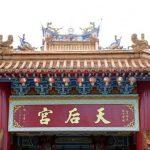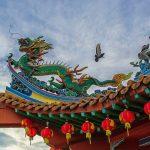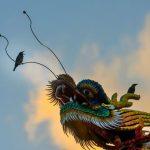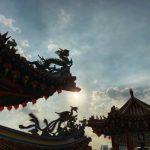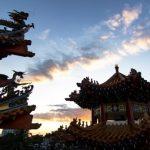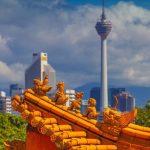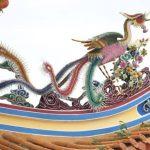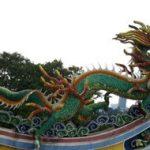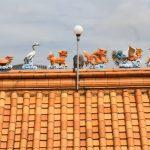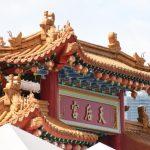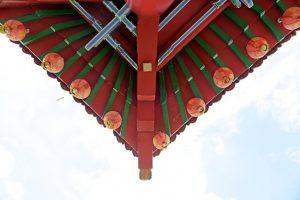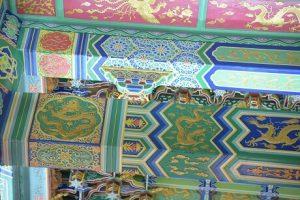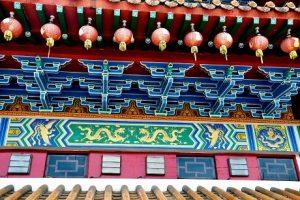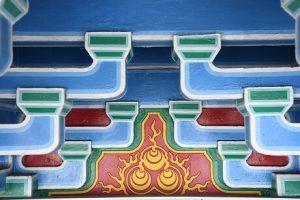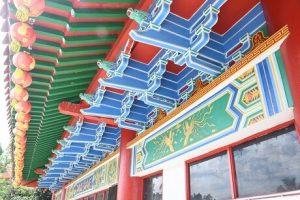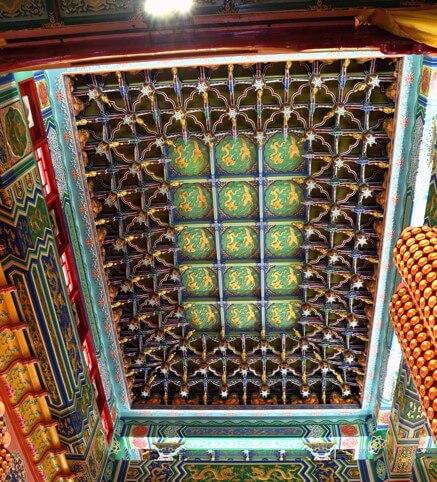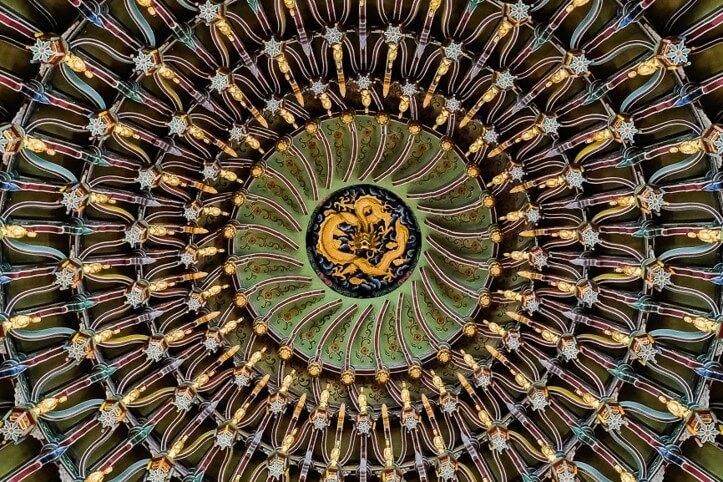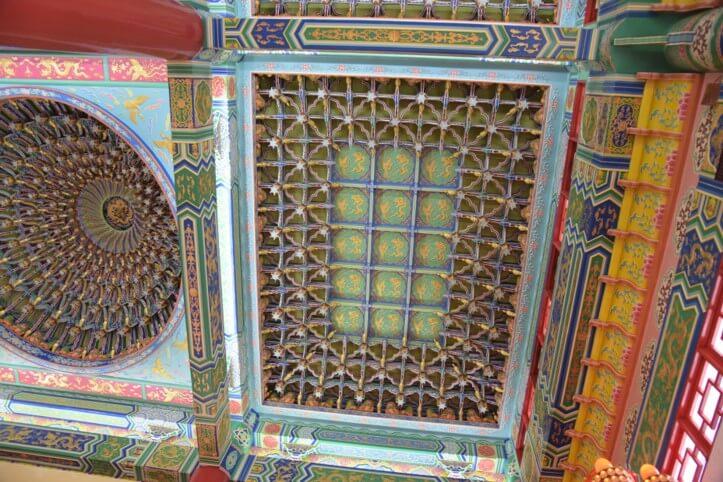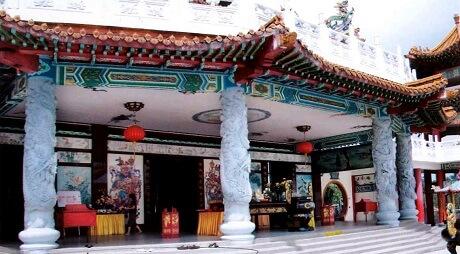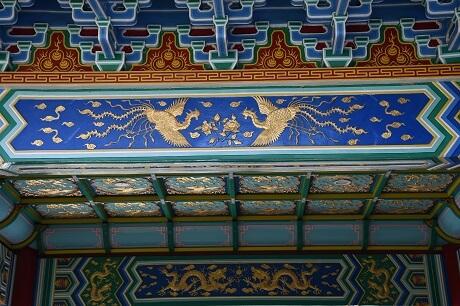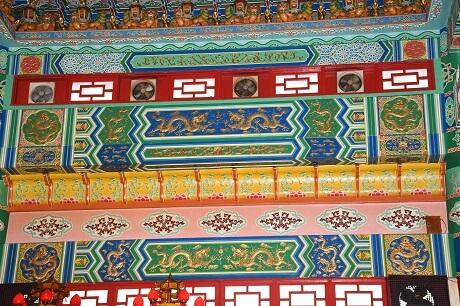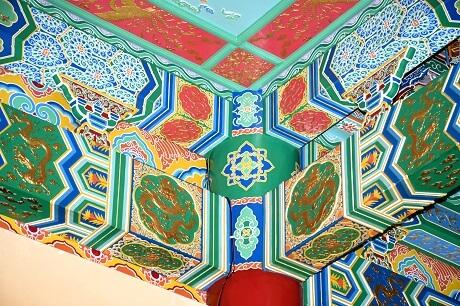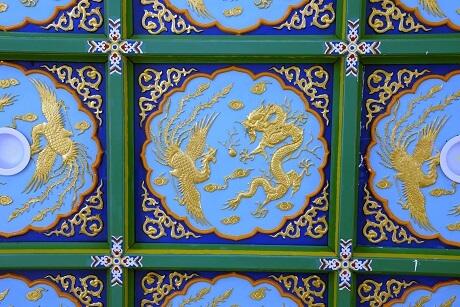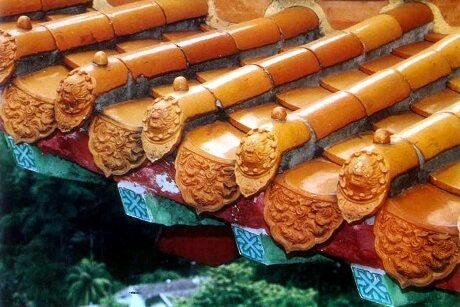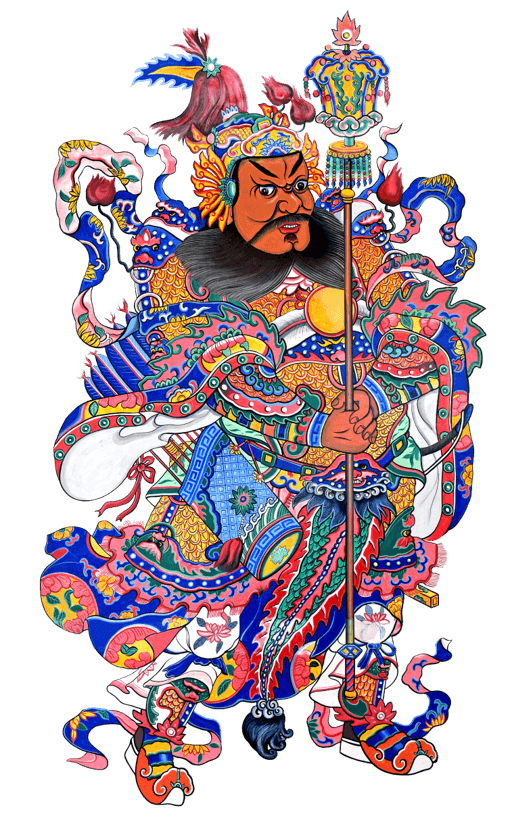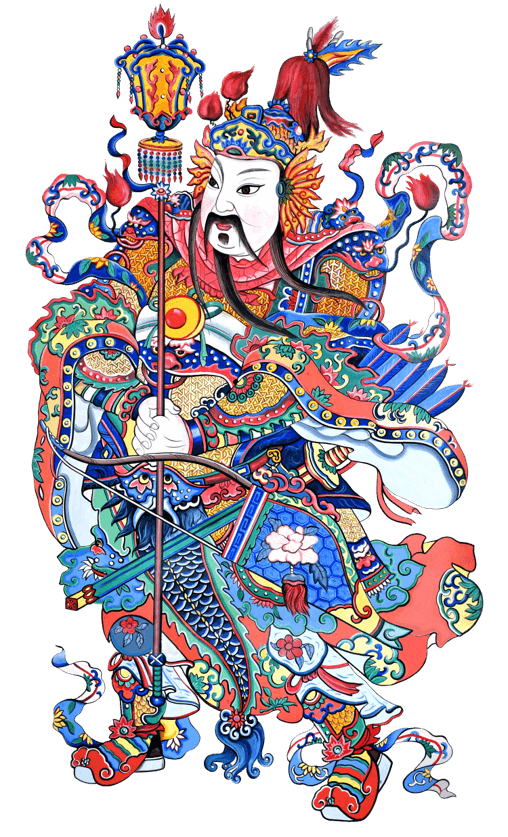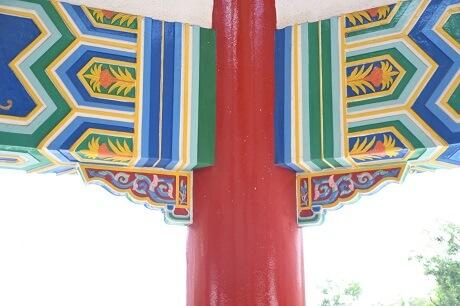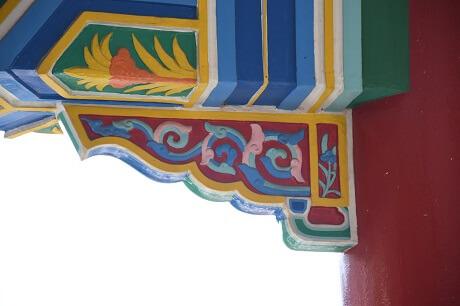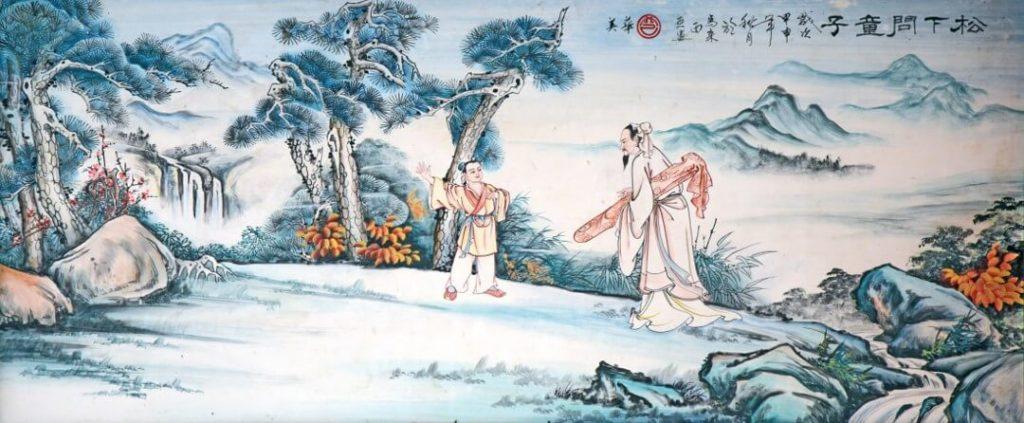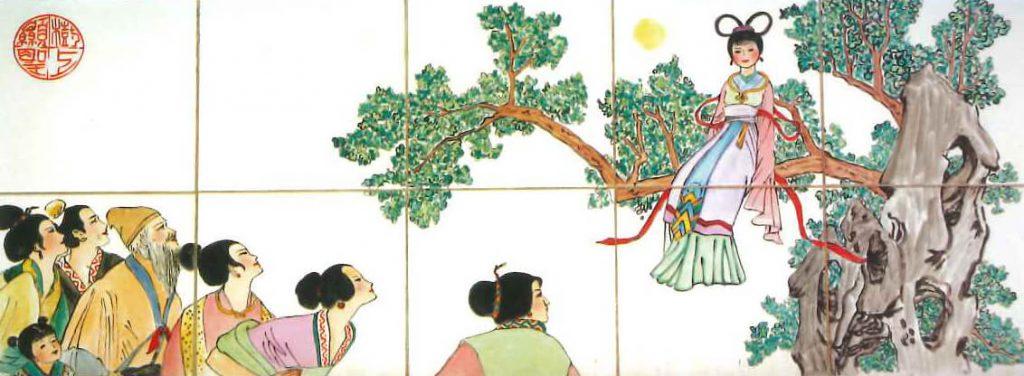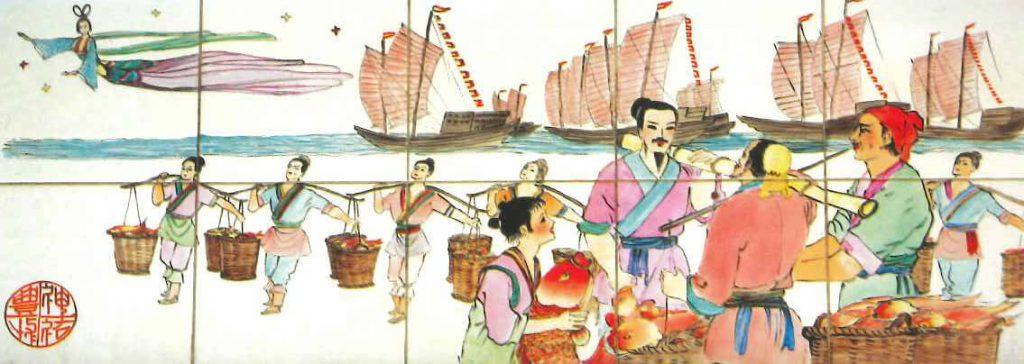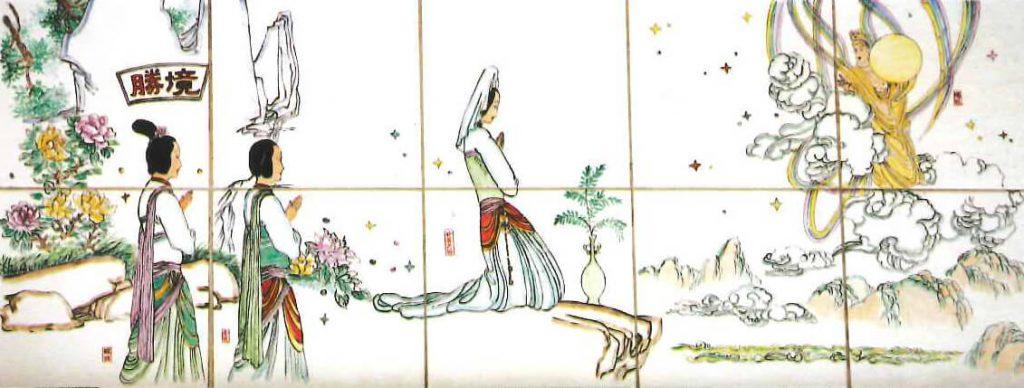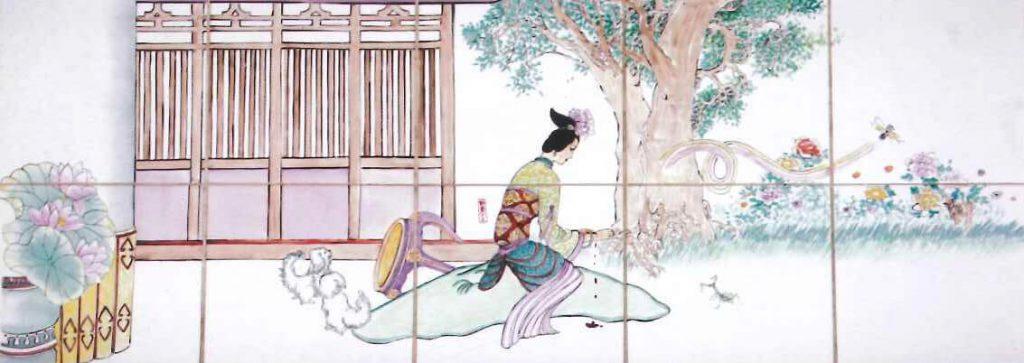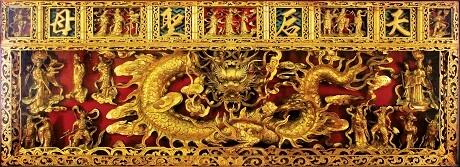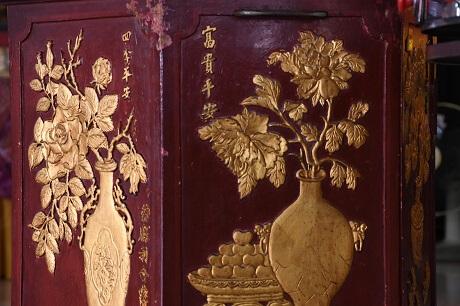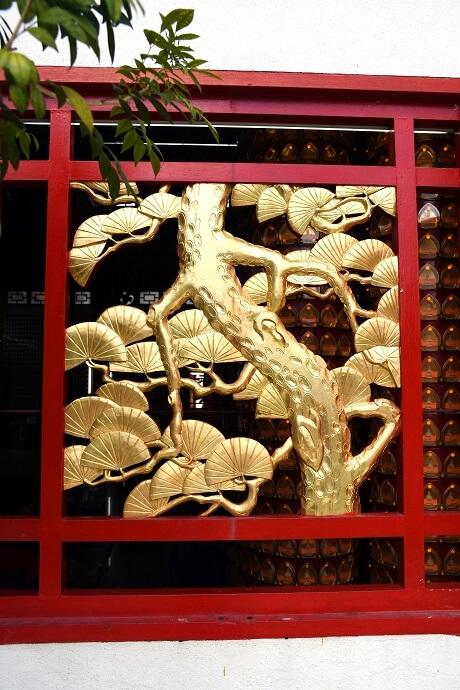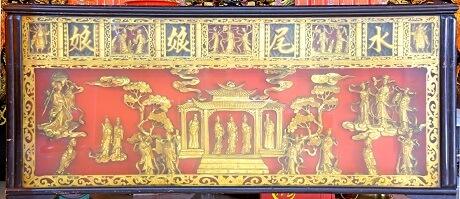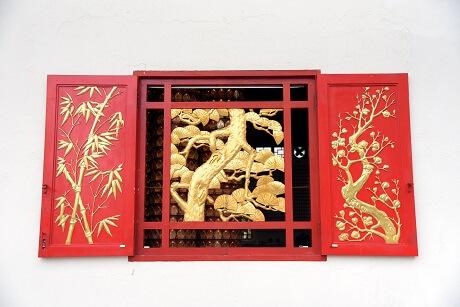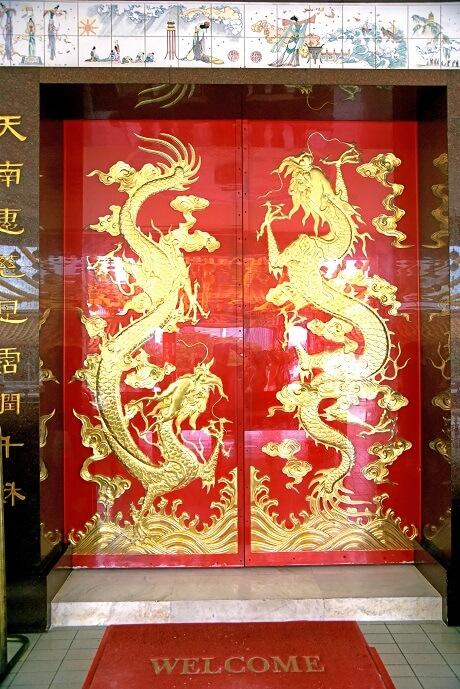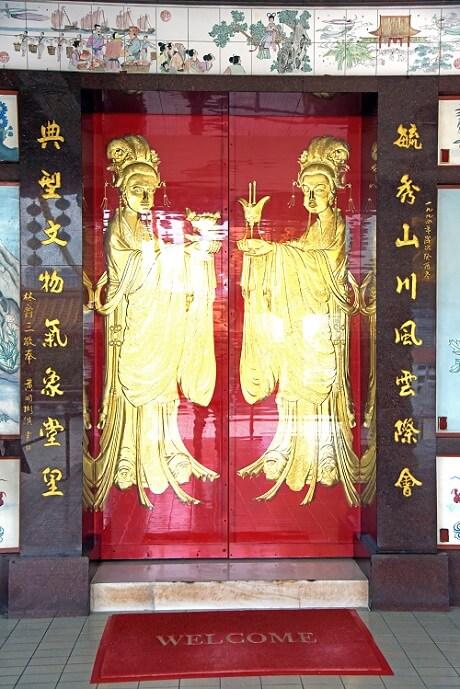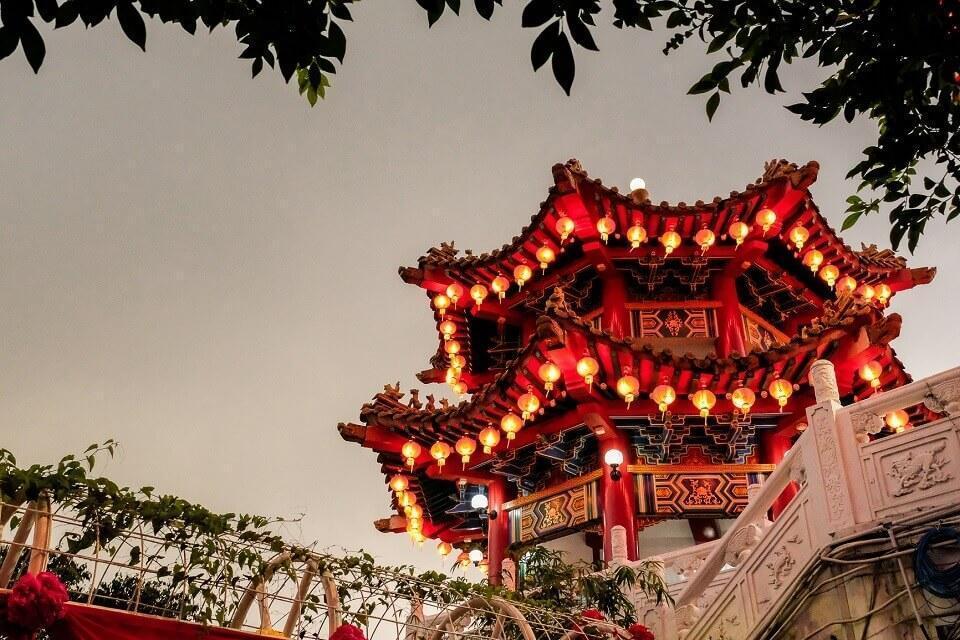
Inheriting Characteristic Of Classical Chinese Architecture

The main building of The Selangor and Federal Territory Hainan Association Thean Hou Temple inherits the characteristics of classical Chinese architecture. Its distinguished features include vibrant colours, bold pigmenteation and strong contrasts. Emotions of these colours are reflected from the facade of the building, making this Sino-architecture extra colourful and radiant.
Colouration of paintings on the Thean Hou Temple’s roof decoration, painted beams, sparrow braces,brackets, rafters, ceilings, coffers, balustrades etc. truly exhibits the colour distinction of Chinese art.
Another distinguished characteristic is the swallow-tail and dragon-phoenix cresting on the temple ridge. It is a classic architectural design of the south. On the other hand, the ridge of the archway at the entrance is in a straight line, featuring two ridge-biting dragons on both ends.This, in turn, is a typical design of the northern architecture.
Hence, it could be said that the Thean Hou Temple of Selangor and Federal Territory Hainan Association is a majestic unification of the southern and northern architectures.

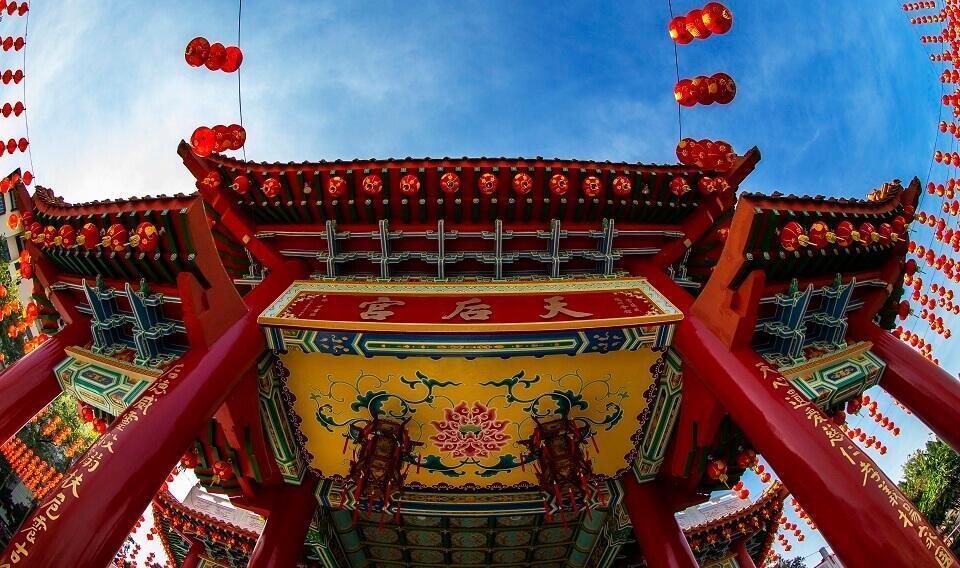
天后宫建筑001
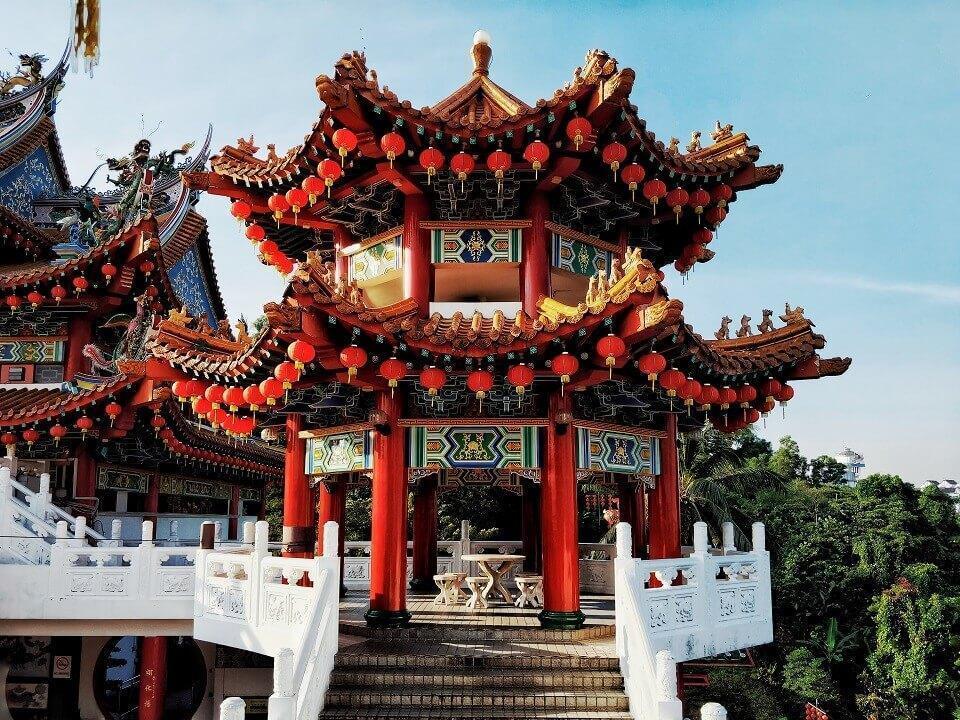
天后宫凉亭001
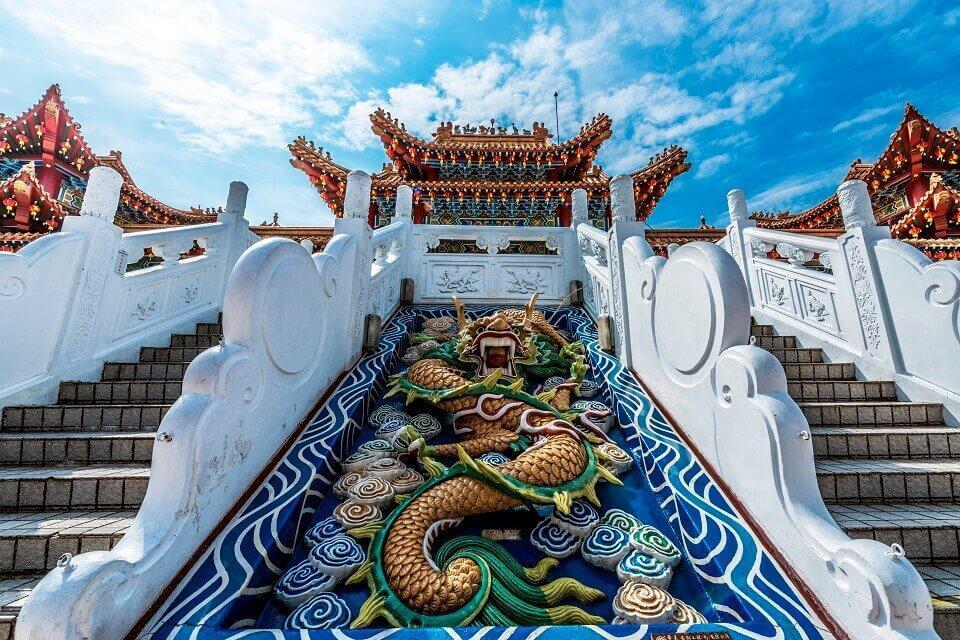
龙升台001
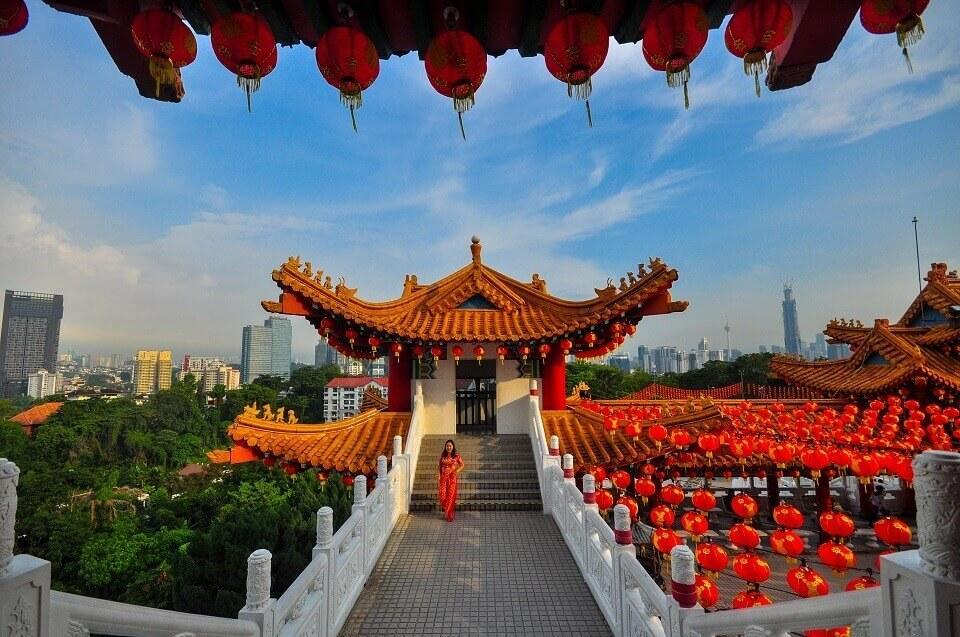
天后宫建筑004
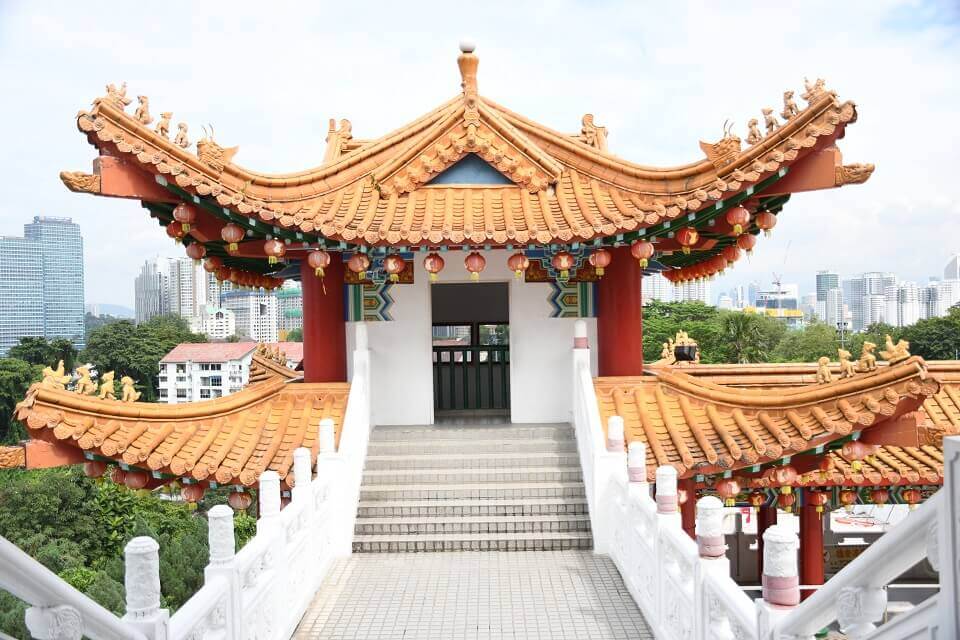
DSC_8682
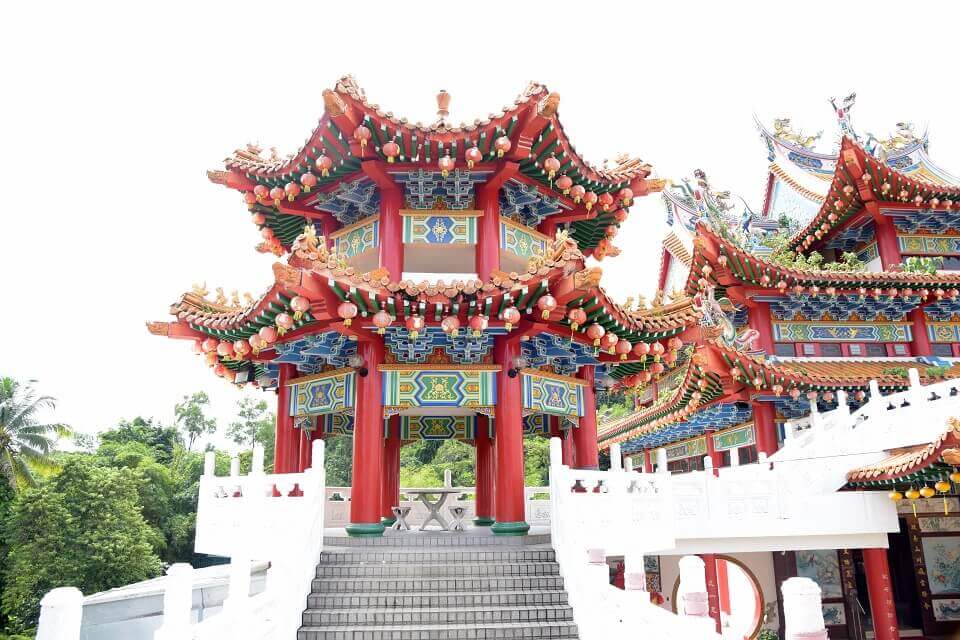
DSC_3151

DSC_0088
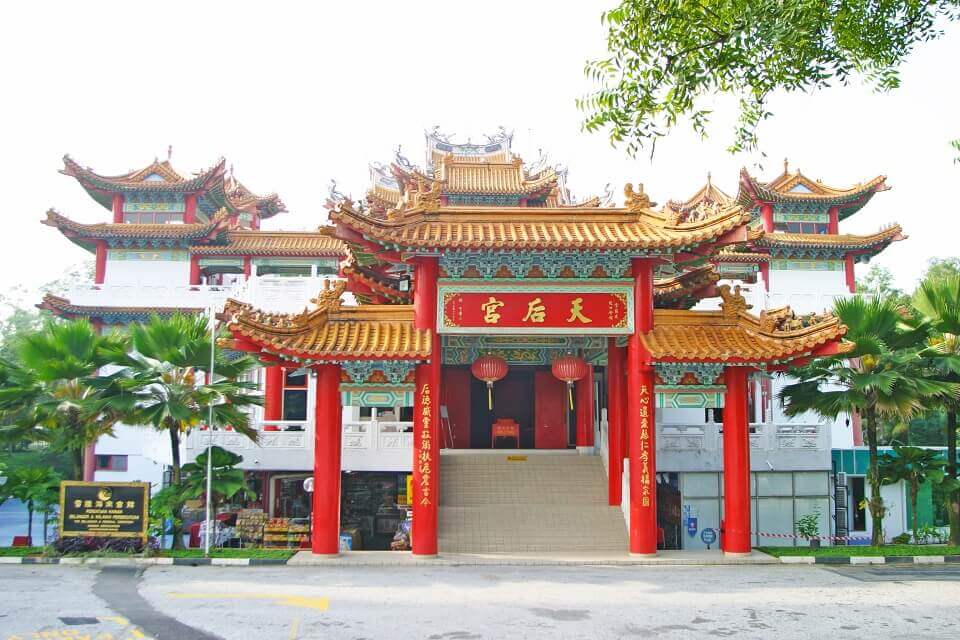
CRW_2421_RJ

IMG_0502
Roof Design
The Thean Hou Temple is modelled from the ancient architecture. Wood was the main building material, over the years, due to the frequent fire incidents; it was then gradually replaced by the metal building materials. Therefore, it is common to find decoration of auspicious animals on the roof, including fishes, dragons, phoenixes, celestial beings, lions and elephants. Some of them are cut from azure stones, and others are burnt with white clay the way glazed tiles are made.
Rafters
Built from square columns. There are a total of 6,134 rafters in the entire temple. The tip of every upper rafter is a colour painting of the swastika whereas the lower tip is engraved with a meniscus shape painting.
Painted beams
Painted beams are cross beams which had been ornamented. The Sino-architecture has been well known for its vibrant colours, bold pigmentation, sharp colouration and strong contrasts. Therefore, temple and regal buildings have been adopting a passionate, joyous and abundant colour scheme.
There are painted beams at Thean Hou Hall, Bell and Drum Tower, Foursquare Pavilion and the memorial archway. There are all together 227 painted beams in the temple, totaling 3,140 feet.
The painted beams in Thean Hou Temple are formed by fang xin (central portion), zao tou(intermediate portion) and gu tou (end portion). Gu tou at the outermost and separated by two vertical lines and with sitting dragon in between. Zao tou is adjacent to gu tou, separated by two zigzag vinculum with a descended dragon in between. Fang xin is located in between the two zao tous and forms the biggest area of the beam.
Dougong (Bracket Set)
Bracket set, or dougong, is a special form in ancient Chinese architecture. It is a connecting part between the columns and the roof for larger buildings. Its function is to support the extended eaves of the structure so that the weight can be concentrated at the columns, or be directed to the architrave, before spreading to the columns. On the appearance, dougong often exudes a sense of mystery and profound secrecy. From the angles of art, aesthetics and technics, dougong is a quintessential representation of the spirit and ethos of ancient Chinese architecture.
The dougongs in Thean Hou Temple are painted in blue with a white border. They are piled up and arranged neatly under the eaves. There are a total of 470 sets of dougongs in the temple, spread over the eaves on Thean Hou Hall, memorial archway, Bell and Drum Tower, scripture pavilion, martial pavilion and the eaves outside the ballroom. The protruding part of the dougong is known as shuatou (nose), presenting a stereo dragonhead in green. On its sides are ‘bracket cushioning slabs’ with the carving of a semi-stereo flame bead, symbolizing auspice.
Caisson Ceiling
In the middle of the ceiling in Thean Hou Hall, there is an incurvate dome with the shape of a baldachin. It is known as a caisson ceiling. Caisson ceiling has long been renowned as a type of complex decorative technic of ancient Chinese architecture. Caisson ceilings come in the shapes of round, square, oval, spiral-convolution and bagua etc.
There are two types of caisson ceilings in Thean Hou Temple, is the round type and the square type. Diameter of the round caisson ceiling is 18 feet. The tip of the smallest circle features a snugged dragon, hanging a chandelier from her mouth. The second circle from centre showcases 24 pineapple-flower-shaped lamp holders. Base of the lamp holders releases red strips, which in turn support a yellow-base annular baldachin with green leaves and red flowers. The pineapple-flower-shaped lamp holders further expands outward and the circles get bigger. Decorative items include 96 lotus lamps and 120 Mazu figurines. The origin of the 24 strips are 24 archaic lion sculptures. In between every 2 lions there is one Mazu figurine, as if the lions are protecting Mazu.
On both sides of the round plafond are two rectangular plafonds. Each plafond also features lotus lamps, Mazu figurines and archaic lions. All Mazu figurines in the round and rectangular plafonds and 8 auspicious cranes neighbouring the round plafond, plus the snugged dragon in the central dome, are embellished with pure gold coils.
Dragon Columns
A total of four dragon columns in Thean Hou Temple are located in front of Thean Hou Hall. Measuring at 15 in height, they are sculptured from cement. Dragons on the columns embrace around the columns. Heads of the dragons are situated at about one third of the columns height, with a gesture of soaring up. All four columns are sprayed in the granite colour looking more elegant and refined, while preserving their original style.
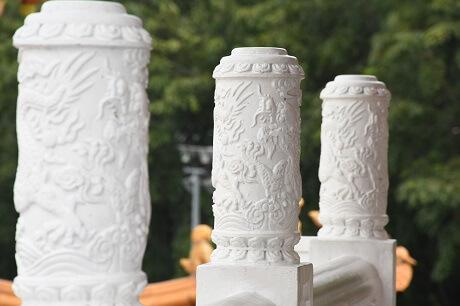
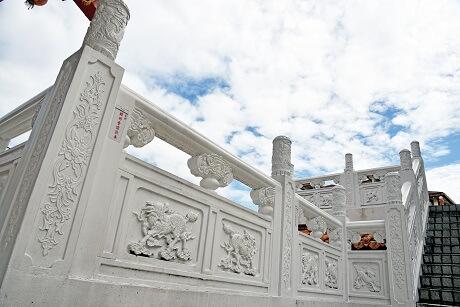
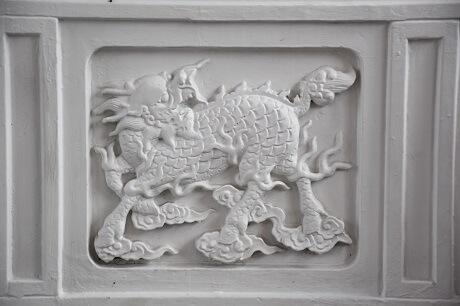
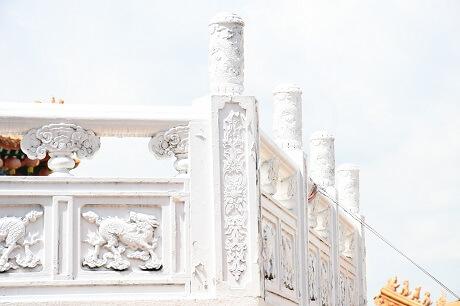
Balustrade
The reason that balustrade became an integral part of ancient Chinese architecture is its inseparable relationship with the stylobate. The balustrade always follows the stylobate. And the shape and design of the stylobate often rely on the balustrade. At some endpoints of some balustrades, their shapes vary distinctly. Normally on top of a few layers of rolling petals there would be a round ‘drum-embracing stone’. These structures are often at the beginning and end of balustrades, also demonstrating the spirit of Sino-architectural structure – ‘where there is a beginning, there is an end’.
Balustrades in Thean Hou Temple are of the Qing Dynasty design. There are a total of 286 rails of balustrades in the temple. The balustrade walls are approximately 6 feet in length and 4 inches in width. The front and back of the dahua slabs are carved with a pair of kirins. (qilin). The capitals, on the other hand, are sculpted with snugged dragons. The vase-shape item in the centre of the balustrade is known as ‘cloud bracket’ (yungong). Normally position of the cloud bracket is at the catercorner of the capitals, so that design of the balustrade could be at its equilibrium.
Plafond
There are two types of square plafond in Thean Hou Temple, namely the dragon-phoenix plafond and the heyun plafond. The dragon-phoenix plafonds are embellished with golden foils and the heyun ones are without. On both sides of the corridor shelter located between the temple’s entrance archway and ballroom, there is a type of wooden, oval yuegongduo plafond. With a semi-circular shape, it is one of the more unique plafonds in Thean Hou Temple.
Glazed Roof Tiles
According to the records in Qing Structural Regulations, there are many glazing colours for roof tiles. The most common ones are yellow and green. The yellow colour is meant for palatial and sacred buildings. The glazed roof tiles used in Thean Hou Temple are all imported from Taiwan and are mainly in golden yellow. Thean Hou Temple is a holy temple.
The majestic statues of Mazu (or Thean Hou) had been chartered by emperors of successive dynasties and therefore is of Godly status. Thus, it is befitting to Her identity and status to use yellow glazed tiles for the roof.
Door Deities
The door deities in Thean Hou Temple are Qin Shubao and Yuchi Gong respectively. It was said that when Emperor Taizong of the Tang Dynasty ascended the throne, there were cries of ghosts and goblins outside his chambers. Generals Qin Shubao and Yuchi Gong volunteered to guard the entrance for Taizong. Since then, the emperor started to sleep well. Not to trouble the generals day and night, Taizong stuck their portraits on the door in order to exorcise evil spirits. The folks followed suit. Subsequently the generals were regarded as door deities.
Sparrow Brace
There are two types of braces in Thean Hou Temple, ie sparrow braces and small sparrow braces. These uniquely designed sparrow braces are carved from cement, decorated with prismatic colours. On the frontage of the ballroom, there are also wooden sparrow braces.
Fresco
The frescos in Thean Hou Temple showcase door deities, peony, plum blossom, orchid, chrysanthemum, lotus, dragon, phoenix, kirin; stories of the 24 filial exemplars, Goddesses of Mazu, Shuiwei and Mercy; and also the dharmic implements of the Eight Immortals (baxian).

